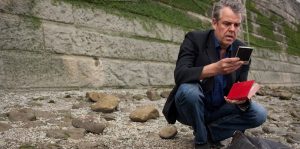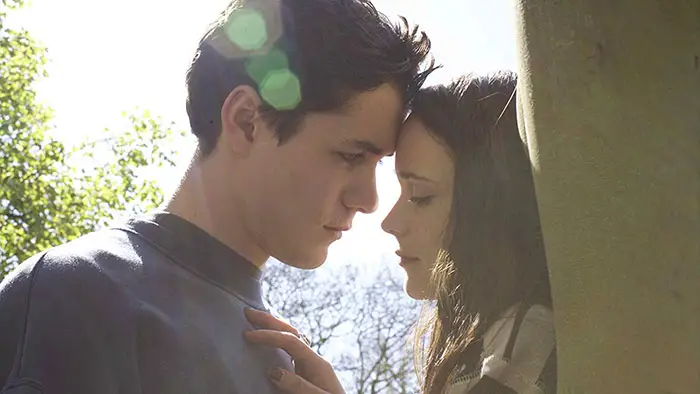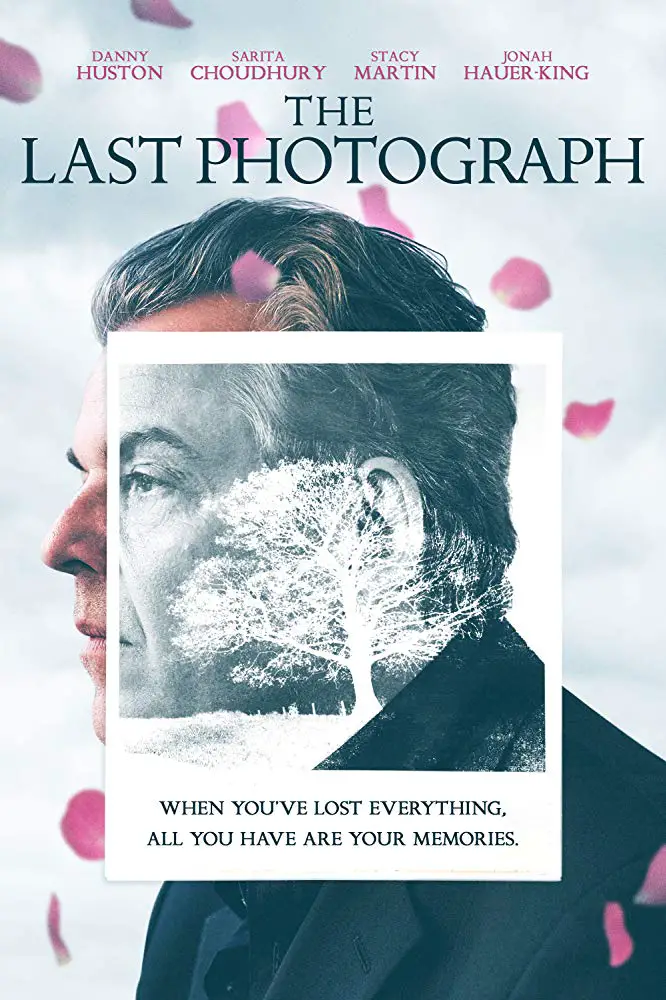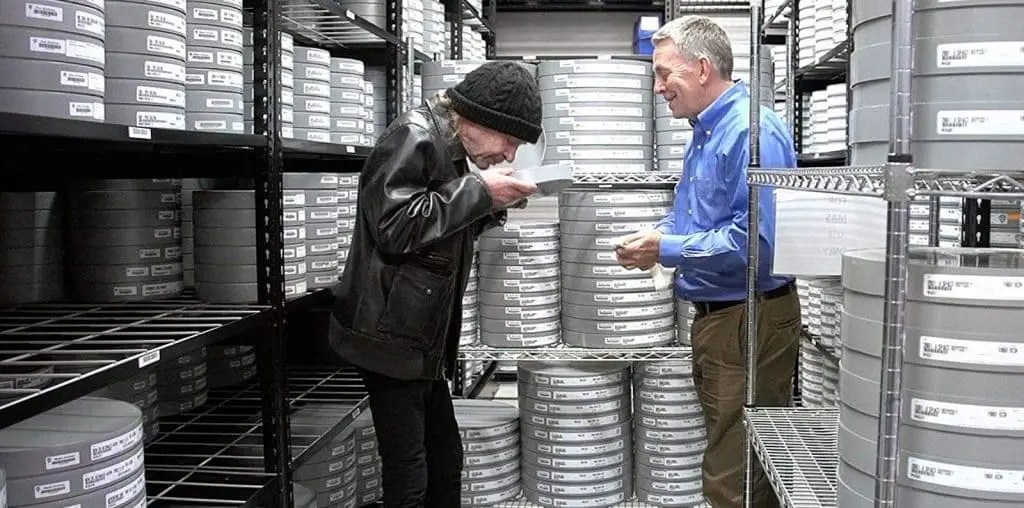
Huston deftly shifts between the past and the present, juxtaposing the blissful with the sorrowful. I mentioned the word “snapshot” earlier – the majority of the film is shot like a series of photographs, in different formats, courtesy of cinematographer Ed Rutherford. Blurred street corners and even blurrier, magnified streetlights mesh with real archive footage and frozen images of an art installation. Fog hangs heavily over pastures. In lesser hands, this all could have easily slid into the realm of pretentiousness, yet Huston assembles a rather striking cinematic collage. The filmmaker also shows restraint when it comes to revealing information, which plays in the film’s favor, immersing you deep into the tragedy.

“Huston assembles a rather striking cinematic collage.”
As an actor, he’s magnificent, crumbling to pieces and trying to reconstruct himself thereafter. “I bought him the ticket,” he tells Hannah despondently. In the wake of the accident, he’s in shock: “I have to get this to my son,” he begs a police officer, holding Luke’s blue sweater. “It’s very cold.” Guilt-ridden and haunted, he exudes natural charisma. Screenwriter Simon Astaire, who based the script on his own book, helps things by imbuing the dialogue with juicy lines like, “I wish I could mourn in peace.”
The young romance sub-plot may be a tad unnecessary, and the film ends up rather slight and anticlimactic despite the hefty subject matter. There’s no denying Huston’s mastery though, both behind and in front of the camera. Here’s to the filmmaker adding more vivid gems to his already-impressive portfolio.

"…blurrier, magnified streetlights mesh with real archive footage and frozen images of an art installation"

